Dr Vino's wine blog
wine talk that goes down easy
You can’t call it that – Budini edition
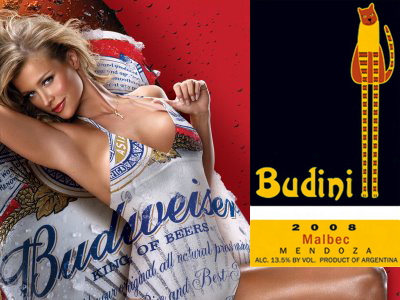
I just got an email from the importer of a 17,000-case Argentine malbec called Budini, which will now be called Bodini. Here’s why:
Vine Connections recently made the decision (or should I say that we were strongly advised by some attorneys to make the decision) to change the name of the wine formerly known as Budini. It will now be called Bodini.
The Budini brand has been in existence since the 2002 vintage. We made the decision to change the Budini brand name because there is another alcoholic beverage company which aggressively protects its trademark that starts with the letters “B-U-Dâ€.
Really, I don’t have any trouble telling the above two labels apart–do you? How many drunk (or sober) people are really going to order a Budini when they wanted a Bud–or vice versa?
What’s greater: “cooked,” “corked” or counterfeit wines? Some evidence
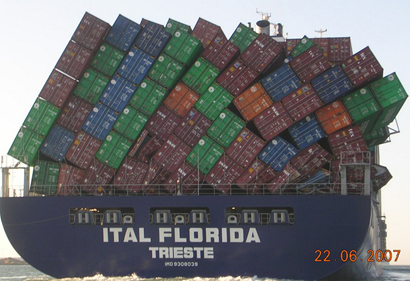
Heat damage might be the biggest silent killer in the wine industry–more even than corked wine, which has much greater renown.
In our recent discussion on “cooked” wine, Louise from eProvenance joined the discussion. Founded by Eric Vogt, a wine collector formerly of Boston Consulting Group, eProvenance can provide a detailed history of wine’s temperature during transit via an RFID tag inserted into either a case or tacked on to a pallet of wine.
Tracking 1,450 shipments in and between the Northern and Southern hemispheres, they assembled a fascinating report: eProvenance found that almost 10 percent of shipments were exposed to temperatures of 30 degrees celsius (86 degrees Fahrenheit) or more for 18 hours or more, a threshold ETS Labs found as significant a perceptible damage in wine. The report generously does not declare all that wine to be “cooked,” instead saying it is merely “at risk”; they suggest 2.8 percent of shipments as having perceptible damage.
Interestingly, some of the highest heat exposure comes not from the journey in the refrigerated container but rather the first and last miles of the journey, as the wine gets to and from the loading bays of wineries and shops. They estimate the monetary value of “at risk” wine to be about $9 billion and the heat-damaged wines to be worth about $2.5 billion.
While eProvenance clearly has an innovative technology to sell and thus may overstate the size of the problem, I am willing to go out on a limb and say that the quantity of heat-damaged wines represents a greater problem for wineries and consumers than counterfeiting. While the Jefferson bottles and their ilk may pose problems for the pinnacle of the wine world, heat-damage may be much farther reaching, especially as cheaper, high-volume wines are less likely to benefit from temperature control.
Heat damage, with its diminution of wine’s aromas and freshness that leads to bad consumer experiences, could well be on par with or a greater problem than TCA, or “corked” wines. If I were a vintner, I would strongly consider adding temperature tracking to every delivery and take corrective measures if problems arose in the supply chain. As a consumer, I’d welcome heat shipping data or a third-party certification on each bottle. But then again, I like data–almost as much as I like sipping a glass of wine that isn’t flawed. Read more…
How much wine outside the winery is cooked? #heatwave
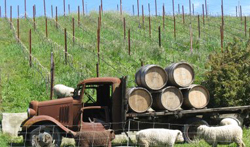 These muggy days in the high 90s have New Yorkers sweltering. So it’s as good a day as any to wonder out loud how much of the wine we drink is at least partially heat-damaged, or, in wine geek vernacular, “cooked.”
These muggy days in the high 90s have New Yorkers sweltering. So it’s as good a day as any to wonder out loud how much of the wine we drink is at least partially heat-damaged, or, in wine geek vernacular, “cooked.”
It’s also been an extremely hot summer in much of Europe. Antonio Galloni considered the implications of this when at a domaine in Burgundy recently, as he saw an unrefrigerated truck hauling away wine bound for America via Dijon, a four-hour drive. Even if it joins a refrigerated container for trans-Atlantic travel, Galloni wrote on eBob, saying, “It doesn’t take a genius to figure out that 4 hours in a truck at 100 degree temps means those wines will probably be cooked before they ever have a chance to oxidize, prematurely or not.”
Fortunately, most conscientious importers do ship in refrigerated containers today. But some warehouses in the US and/or delivery trucks Read more…
New legislative bill threatens the diversity of New York’s wine market
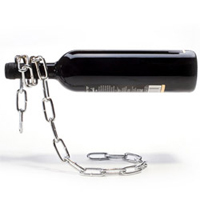 Last week in the NYT, Eric Asimov highlighted the wine program at Nice Matin, a restaurant on the Upper West Side that has remarkable breadth of offerings, depth of vintages and sharp pricing. This apparent wine lover’s idyll was not always this way: only in the past few years have the owners built up the wine program, in part by purchasing the cellars of now-defunct restaurants. Further, the wine director “prowls through a network of collectors and winery owners, seeking mature older vintages to add to the list.”
Last week in the NYT, Eric Asimov highlighted the wine program at Nice Matin, a restaurant on the Upper West Side that has remarkable breadth of offerings, depth of vintages and sharp pricing. This apparent wine lover’s idyll was not always this way: only in the past few years have the owners built up the wine program, in part by purchasing the cellars of now-defunct restaurants. Further, the wine director “prowls through a network of collectors and winery owners, seeking mature older vintages to add to the list.”
Across town and upstate, specialty wine shops such as Chambers Street Wines and Crush Wine and Spirits or Grapes the Wine Company, often broker collections of rare older wines that individual collectors are selling. And even though wine auctions have shifted to Hong Kong with astonishing speed over the past couple of years, the gavel still does come down on wine lots at places like Sotheby’s and Christie’s here in New York.
All of these facets of the wine business mean that, with a bit of effort, a wine enthusiast can hunt down an enormous range of rare bottles in New York. It is arguably the best city on earth for wine lovers.
But the status quo is under threat thanks to new proposed legislation in Albany. Read more…
Scan wine flash sale sites, at a glance
A surplus of wine in the past couple of years has led to closeouts, which, in turn, has led to the proliferation of daily deal wine sites. But there are now so many that it can be hard to keep up with them all. Thus the new site winehoarder.com.
![]() Still in beta, the site aggregates offers from the leading “flash sale” sites. Beyond detailing the sales, the site also offers various “social” features, such as voting up the deals and discussion boards. Still embryonic, it could grow into something useful with more participants. But one thing that is useful now is that it provides a record of the wines offered a the various flash sale sites and usually those sites make it difficult to see what exactly they’re offering without clicking through.
Still in beta, the site aggregates offers from the leading “flash sale” sites. Beyond detailing the sales, the site also offers various “social” features, such as voting up the deals and discussion boards. Still embryonic, it could grow into something useful with more participants. But one thing that is useful now is that it provides a record of the wines offered a the various flash sale sites and usually those sites make it difficult to see what exactly they’re offering without clicking through.
Anyway, I like the idea since late one evening, probably after too much cru Beaujolais, I once thought about doing such a site myself! What do you think–obviously the site’s not much of a looker yet, but is this better than scanning 50 emails a day? Or is the flash sale world of wine sales so fast moving that such an aggregator site is not quick enough for you to score the deals you want?
Zin man update, critters, counterfeiting, Fetzer – sipped & spit
 SIPPED: more Zin Man
SIPPED: more Zin Man
The ad about Zin man, riffing on the Old Spice guy, got a big thumbs up from all of you. So I asked the Paso Robles folks for a few more details about their ad. While they wouldn’t provide details about how much it cost, they did say the ad was shot in Paso Robles using a professional actor (not a vintner) as the star. They are planning 8-10 more ads this year.
SPIT: Celebrity status
Out of disbelief, a wine store clerk in Manhattan refuses Matt Damon’s credit card for the star’s impulse purchase of $1,200 of wine, insisting that he pay cash. Which store was it? And which wine was it? [latimes with video]
RUNG: alarm bell
A French researcher warned a Bordeaux trade group this week that the region will be too warm to grow red wine grapes to long-lived wines–by as early as 2050. When will Norway develop a premier cru? [AFP]
SIPPED: foreign takeover
Concha y Toro, Chile’s #1 wine producer, is buying Fetzer’s three million case production for $238 million. How will this affect consumers of Bonterra, or Fetzer’s other brands? Probably not at all. Concha y Toro shares in Santiago were up 7% on the news. The Chilean currency has appreciated by 21% against the greenback in the past two years. Will other domestic wineries be in the sights of foreign companies? [WSJ]
SPIT: critter labels
In case we needed any further indication that critter labels have jumped the shark right off the wine bottle, Yellow Tail is now suing a more recent arrival for infringing on the wallaby. [WSJ]
SPIT: counterfeiting?
The BBC explores laser bottle etching, stealth mineral placement, and bubble codes at Chateau Margaux, all weapons in the current fight against counterfeiting. Whether these measure can outsmart fraudsters remains to be seen.
Is Pennsylvania finally taking aim at the PLCB?
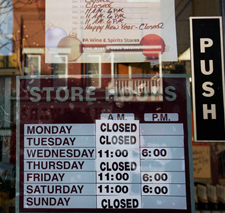 Blend $4 billion in deficits with a new
Blend $4 billion in deficits with a new Tea Party governor. Squeeze in a full Republican legislature. Shake and garnish with consumer bitters.
Will this stiff drink, now on the table in Harrisburg, lead to the end of the PLCB? The state-run system that bestows such snappy names on its wine stores as #5801 is in a rough patch. As seen in the picture at right (and the accompanying Times story details), the opening hours of this store are limited and the prices, selection and knowledge of the staff may not be all that great either at some state-owned stores. The new kiosks have bombed. Consumer dissatisfaction may be growing as is chatter about privatization. Even though previous governors have floated the idea only to meet with failure, the stars seem to be aligning for reform. While this is something most Pennsylvania wine consumer would likely raise a glass of hard-to-find wine to, the logic that will carry the day for public officials is about money. Read more…
Spitting, India, Wal-Mart, millennials, Champagne – sipped & spit

SIPPED: spitting!
“The length and precision of the stream are just unbelievable.” No, this is not something from Urology. They actually have a wine spitting contest in France! [France24]
SIPPED: tariffs
Will India develop a thirst for wine? Maybe after it reduces its thirst for 150+% tariffs & taxes. [WSJ]
SPIT: human interaction
Remember those wine vending machines in PA? WalMart wants in. Redbox DVD? Check. Wine from kiosk? Check. Humans? Nil. [The Consumerist]
SPIT: 7-eleven wine
Millennial “would rather die” than drink wine sold at 7-Eleven. [Thomson Family Vineyards]
SIPPED: bankruptcy
A&P grocery stores, which purchased Best Cellars in 2007, filed for bankruptcy yesterday. Given that Royal Ahold (owner of Stop & Shop) is already circling, the new, merged company could be called Stop & P. [Bloomberg]
SIPPED: foreign ownership?
Speaking of distress sales, a French blogger wonders if a Chinese bidder may emerge for Heidsieck Champagnes. Sure, one may come forward, but it will have to do better than India’s United Breweries, which received a “frosty reception” bidding on Taittinger in 2006.



